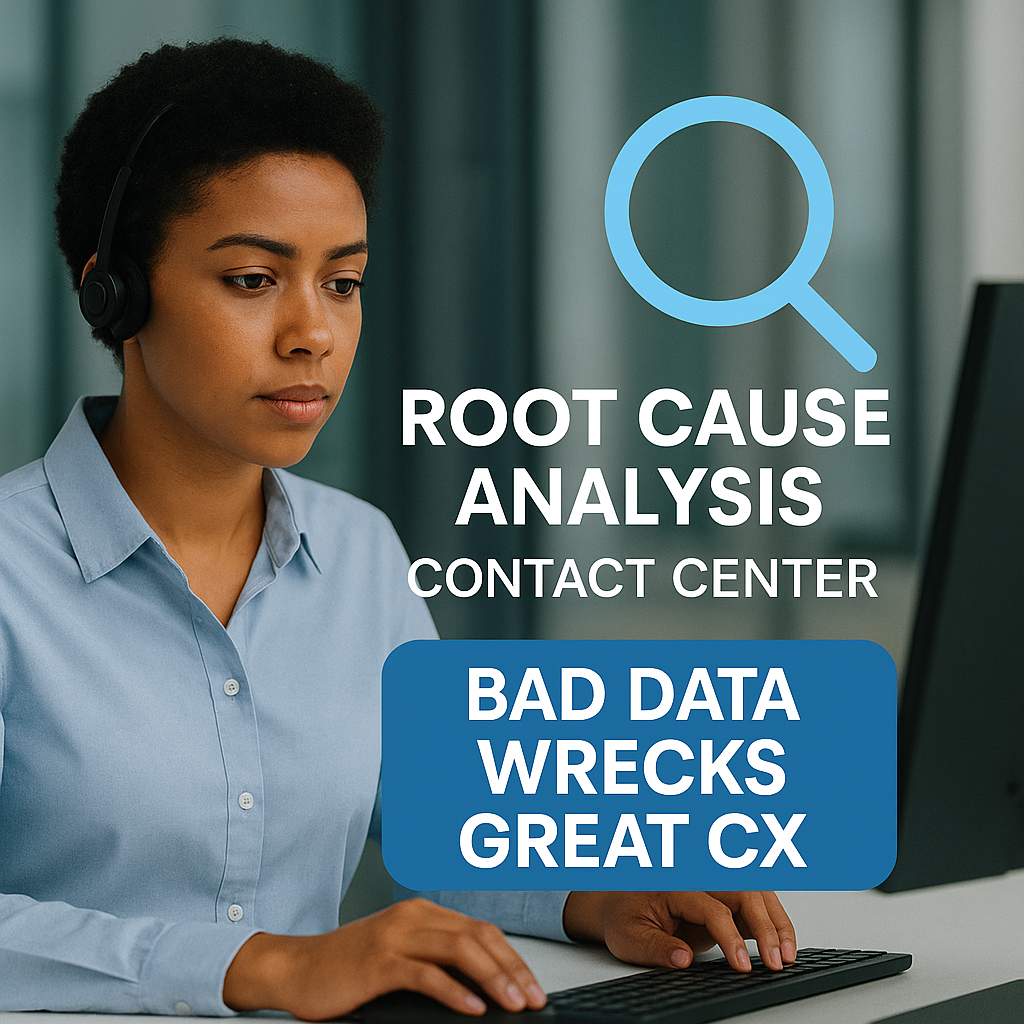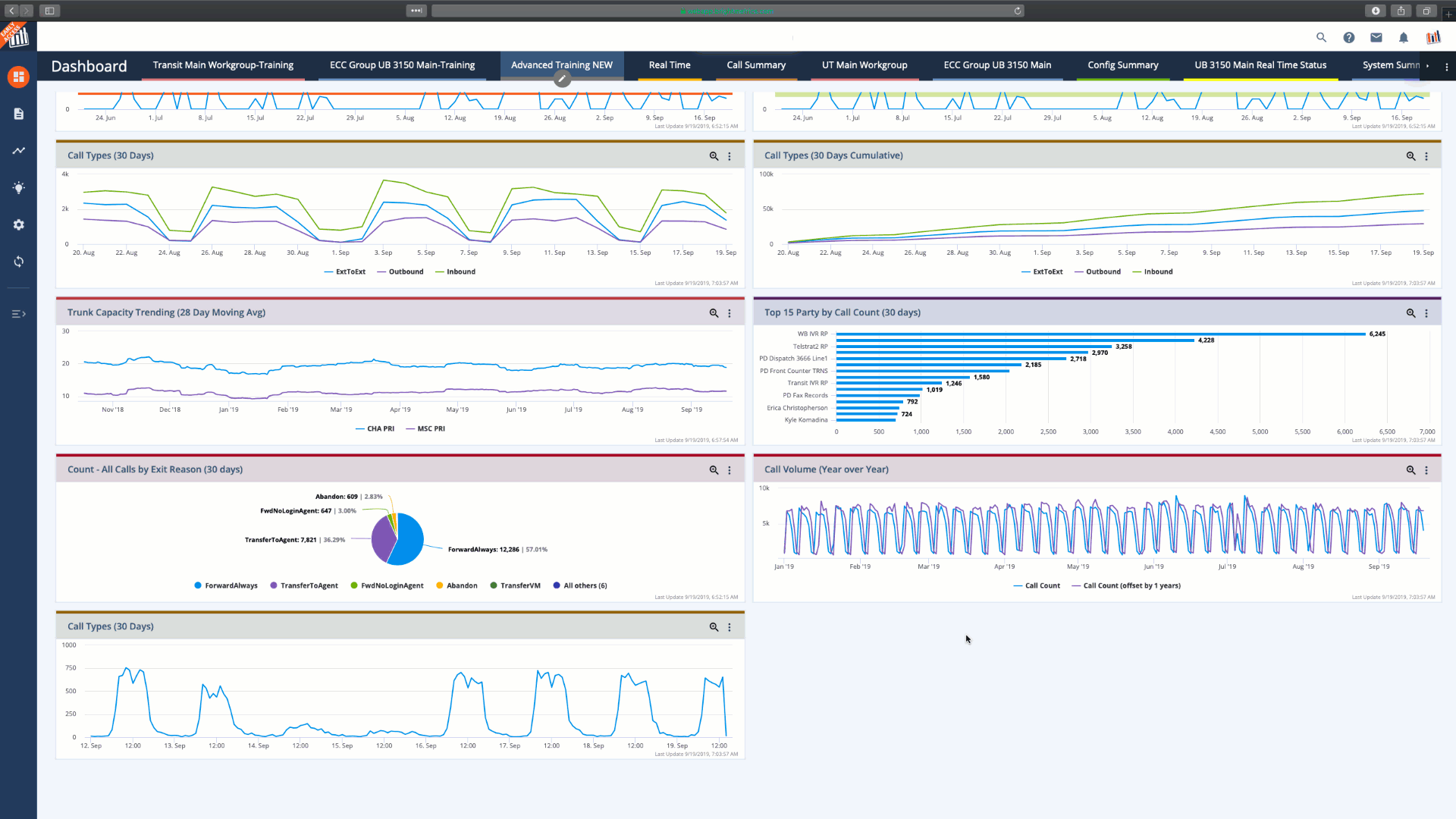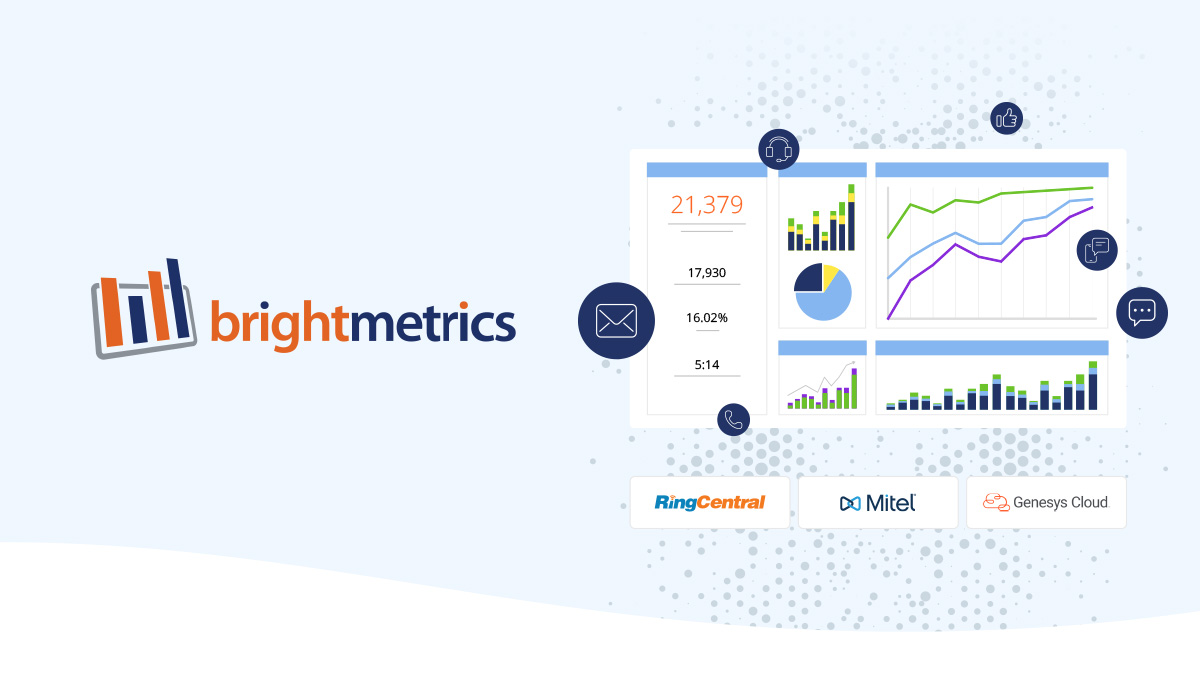What is Root Cause Analysis?
Root Cause Analysis (RCA) is a systematic approach to identifying the underlying reasons behind common issues, repeat calls, and customer dissatisfaction. Rather than applying temporary fixes to surface-level problems, RCA uncovers and resolves the systemic issues that create recurring problems for both customers and organizations.
Key Definition: Root Cause Analysis identifies fundamental causes rather than symptoms, enabling organizations to prevent problems from recurring instead of repeatedly treating the same issues.
Why Root Cause Analysis Matters
The True Cost of Ignoring Root Causes
Organizations that fail to conduct proper Root Cause Analysis face significant consequences:
Financial Impact: Resources are wasted addressing the same problems repeatedly. Customer service representatives handle identical complaints daily. Technical teams deploy emergency patches for recurring bugs. This represents labor, time, and money spent on preventable problems.
Customer Loyalty Damage: Customers experiencing the same problem multiple times quickly lose faith in a company’s competence. Even if individual interactions are handled well, patterns of recurring issues signal systemic dysfunction. Customer acquisition costs far exceed retention costs, making every lost customer due to preventable problems particularly expensive.
Employee Morale: Teams stuck in perpetual reactive mode experience low engagement. There’s nothing more demoralizing than apologizing for the same failures repeatedly. When employees feel trapped on a hamster wheel of recurring problems, burnout increases and top talent seeks opportunities elsewhere.
Opportunity Costs: Every hour spent addressing repeat issues is an hour not spent on innovation, improvement, or growth. Organizations trapped in reactive firefighting struggle to be strategic, creative, or forward-thinking.
The Root Cause Analysis Methodology: 6 Essential Steps
Step 1: Define the Problem Clearly
Effective RCA begins with precise problem definition using specific, measurable terms.
Poor example: “Customers are unhappy” Good example: “30% of customers who sign up for our service call support within the first week”
Clear problem definition includes:
- Scope and frequency of occurrence
- Who is affected
- Consequences and impact
- When the problem started
- Baseline metrics
Step 2: Collect Comprehensive Data
Gather information from multiple sources:
Quantitative data: Call logs, ticket categories, error rates, customer satisfaction scores Qualitative information: Customer feedback, employee observations, process documentation
Best Practice: Cast a wide net initially. Look at trends over time rather than isolated incidents. Examine whether problems cluster around particular products, processes, times, or customer segments. Interview frontline staff who interact with these issues daily.
Step 3: Identify Possible Causal Factors
Use proven techniques to brainstorm potential causes:
The Five Whys Method: Ask “why” repeatedly to drill down from symptoms to root causes.
Example:
- Problem: Customers are calling about incorrect billing
- Why? Invoices show charges that don’t match expectations
- Why? Pricing information during signup differs from the billing system
- Why? Website was updated but billing system wasn’t
- Why? No standardized process ensures all systems reflect pricing changes
- Why? Pricing changes are managed by marketing who aren’t aware of all systems needing updates
Root Cause Identified: Lack of cross-functional coordination in pricing change management process
Fishbone Diagrams (Ishikawa): Organize potential causes into categories like people, processes, technology, and environment to ensure comprehensive examination.
Step 4: Identify the Root Cause(s)
Not every causal factor is a root cause. Analyze potential causes to determine which ones, if addressed, would prevent problem recurrence.
Root Cause Characteristics:
- Fundamental rather than symptomatic
- Clear connection to the problem
- Eliminating them prevents similar future issues
- Within your control to change
Important Note: Complex problems often have multiple root causes. A recurring technical issue might stem from both inadequate testing procedures AND insufficient documentation.
Step 5: Develop and Implement Solutions
Design solutions that address root causes directly.
Effective Solutions Are:
- Specific and actionable
- Sustainable long-term
- Often involve changes to processes, systems, training, communication, or organizational structure
Prioritization Factors:
- Impact: How much will this reduce the problem?
- Feasibility: How difficult is implementation?
- Cost: What resources are required?
Implementation Requirements:
- Clear ownership
- Specific timelines
- Defined success metrics
Step 6: Monitor Results and Adjust
Track whether solutions actually resolve root causes and prevent problem recurrence.
Monitor the same metrics used to define the problem initially and compare against baseline data. If problems persist despite implementing solutions, the identified root causes may have been incorrect, incomplete, or solutions weren’t properly executed.
Key Principle: This feedback loop is essential for continuous improvement and organizational learning.
Practical Applications of Root Cause Analysis
Reducing Repeat Customer Calls
Common Surface-Level Assumption: This is a customer service problem requiring better first-call resolution training.
What RCA Often Reveals: Repeat calls cluster around specific products, processes, or customer journey stages. Customers call back because:
- Initial solutions don’t actually work (indicating product defects)
- Root issues require backend changes taking days, but customers aren’t informed about timing
- Knowledge resources are inadequate or incomplete
Impact of Addressing Root Causes: Dramatic reduction in repeat call volume while simultaneously improving customer satisfaction.
Addressing Customer Dissatisfaction Trends
Common Surface-Level Assumption: Need to improve individual service interactions.
What RCA Often Reveals:
- Dissatisfaction spikes after customers encounter specific product features (usability problems)
- Customers become frustrated because policies themselves are customer-unfriendly
- Policies are inconsistently applied across channels
- Product issues create dissatisfaction that service excellence cannot compensate for
Impact of Addressing Root Causes: Organizations address dissatisfaction at its source rather than asking frontline teams to compensate for systemic problems.
Improving First Contact Resolution
Common Surface-Level Assumption: Agents need more training.
What RCA Often Reveals:
- Agents lack authority to make decisions, requiring escalations for routine issues
- Critical information resides in systems agents can’t access during calls
- Knowledge bases are outdated or incomplete
- Processes require coordination with unresponsive departments
Impact of Addressing Root Causes: Systemic changes that enable resolution rather than simply exhorting agents to “resolve more on the first call.”
Building a Culture of Root Cause Analysis
For RCA to deliver sustained benefits, it must become embedded in organizational culture.
Leadership Modeling
Leaders should ask “what’s the root cause?” rather than “who made this mistake?” This shifts focus from blame to learning and improvement. Celebrate teams that identify and address root causes—even when the process reveals uncomfortable truths.
Resource Allocation
Provide dedicated time and resources for proper analysis. Investing hours in RCA saves days or weeks of future problem-solving time. Build this expectation into workflows and resource allocation.
Psychological Safety
People must feel comfortable raising issues, identifying systemic problems, and acknowledging when processes aren’t working without fear of punishment. Without this safety, problems remain hidden and root causes fester.
Widespread Competency Development
Develop RCA competency throughout the workforce, not just among specialized quality teams. When everyone understands root cause thinking, the organization develops immune system capabilities that identify and address problems continuously.
Measuring Root Cause Analysis Impact
Key Metrics to Track
Repeat Contact Rate: If effective RCA addresses root causes, fewer customers should experience the same problems, leading to decreased repeat call rates.
First Contact Resolution (FCR): As systemic barriers are removed, more issues can be resolved on initial contact.
Customer Satisfaction (CSAT) and Net Promoter Score (NPS): Sustained improvement following targeted RCA initiatives demonstrates impact on customer experience.
Cost Savings: Reduced service volume, fewer escalations, and decreased rework. When problems stop recurring, resources previously dedicated to addressing them become available for value-creating activities.
Employee Satisfaction and Retention: Teams move from reactive firefighting to proactive problem-solving, improving engagement and reducing turnover.
Common Root Cause Analysis Mistakes to Avoid
Stopping Too Soon: Accepting surface-level causes without digging deeper to fundamental issues.
Blame Culture: Focusing on individual mistakes rather than systemic problems creates fear and prevents honest analysis.
Analysis Paralysis: Waiting for perfect information instead of acting on sufficient evidence.
Implementing Solutions Without Monitoring: Failing to verify whether solutions actually resolve root causes.
Ignoring Multiple Root Causes: Assuming complex problems have single causes when they typically have several contributing factors.
Empowering Root Cause Analysis with the Right Tools
While methodology and mindset are essential, having the right tools can dramatically accelerate and enhance RCA efforts. Contact center analytics platforms like Brightmetrics become invaluable partners in continuous improvement.
How Brightmetrics Supports Root Cause Analysis
1. Identifying Problems Before They Escalate
Brightmetrics automatically aggregates and analyzes contact center data, making it easy to identify patterns, trends, and anomalies that signal underlying problems.
Key Capabilities:
- Customizable dashboards monitoring repeat call rates, Call resolution trends, and call reason patterns
- Automated alerts when metrics trend in the wrong direction
- Early warning system enabling proactive investigation before small issues become major problems
2. Data-Driven Root Cause Investigation
The data collection phase often represents the most time-consuming bottleneck in RCA. Brightmetrics eliminates this friction by providing instant access to comprehensive historical data.
Analysis Capabilities:
- Segment and filter by time period, call reason, agent, queue, customer type, or any relevant dimension
- Uncover where problems are concentrated with granular visibility
- Move from vague problems to actionable insights
Example: Instead of “we have too many repeat calls,” Brightmetrics reveals “repeat calls spike for customers who contact us about Product X during their first 30 days, specifically when routed to our East Coast call center”—pointing toward specific root causes.
3. Tracking the Impact of Solutions
Brightmetrics enables you to close the loop on Root Cause Analysis by monitoring whether solutions actually work.
Verification Process:
- Track the same metrics that originally identified the problem
- Compare performance before and after interventions
- Use evidence-based approach to verify root causes have been addressed
- Adjust strategies based on actual results rather than assumptions
4. Building RCA into Daily Operations
Brightmetrics supports cultural shift toward continuous Root Cause Analysis by making data accessible to everyone who needs it.
Democratization Benefits:
- Managers and team leaders access intuitive dashboards without requiring specialized analysts
- Automated alerts for unusual patterns
- Scheduled reports tracking key metrics
- Visualization tools making trends immediately apparent
- Teams at all levels can identify and address root causes in their areas
Transformation: Root Cause Analysis evolves from an occasional special project into an ongoing operational discipline.
Key Takeaways: Root Cause Analysis Best Practices
Define Problems with Precision: Use specific, measurable terms including scope, frequency, and impact rather than vague descriptions.
Ask Why Five Times: Drill down from symptoms to fundamental causes using structured questioning techniques.
Gather Comprehensive Data: Collect both quantitative metrics and qualitative insights from multiple sources including frontline staff.
Test Your Hypotheses: Verify that addressing identified causes would actually prevent problem recurrence.
Implement Sustainable Solutions: Design changes to processes, systems, and structures rather than temporary fixes.
Monitor and Adjust: Track whether solutions work and be willing to revise your understanding of root causes based on evidence.
Build Cultural Support: Create psychological safety, provide resources, and develop RCA competency throughout your organization.
Leverage Analytics Tools: Use platforms like Brightmetrics to accelerate data collection, pattern identification, and impact measurement.
Conclusion: From Reactive to Proactive
Root Cause Analysis represents a fundamental shift from accepting recurring issues as inevitable to eliminating problems at their source. Organizations that develop RCA capabilities discover that upfront investment in understanding and addressing root causes pays dividends through reduced inefficiency, improved customer loyalty, enhanced employee morale, and freed capacity for innovation.
In an era where customer expectations continue rising and competition intensifies, the ability to quickly identify and resolve systemic issues becomes a competitive advantage. Organizations that master Root Cause Analysis don’t just solve today’s problems—they build capability to continuously improve, adapt, and excel.
The question isn’t whether your organization can afford to invest in Root Cause Analysis—it’s whether you can afford not to.
Take the Next Step with Brightmetrics
Root Cause Analysis is too important to leave to chance or rely on incomplete information. Organizations that excel at identifying and resolving systemic issues combine rigorous methodology with powerful analytics tools.
Brightmetrics helps contact centers:
- Identify patterns and emerging issues early
- Investigate root causes with comprehensive data access
- Measure improvement impact with before/after tracking
- Build continuous RCA into daily operations
Ready to move beyond treating symptoms and start solving problems at their source?
Visit brightmetrics.com or schedule a demo to see how Brightmetrics accelerates your Root Cause Analysis efforts.



